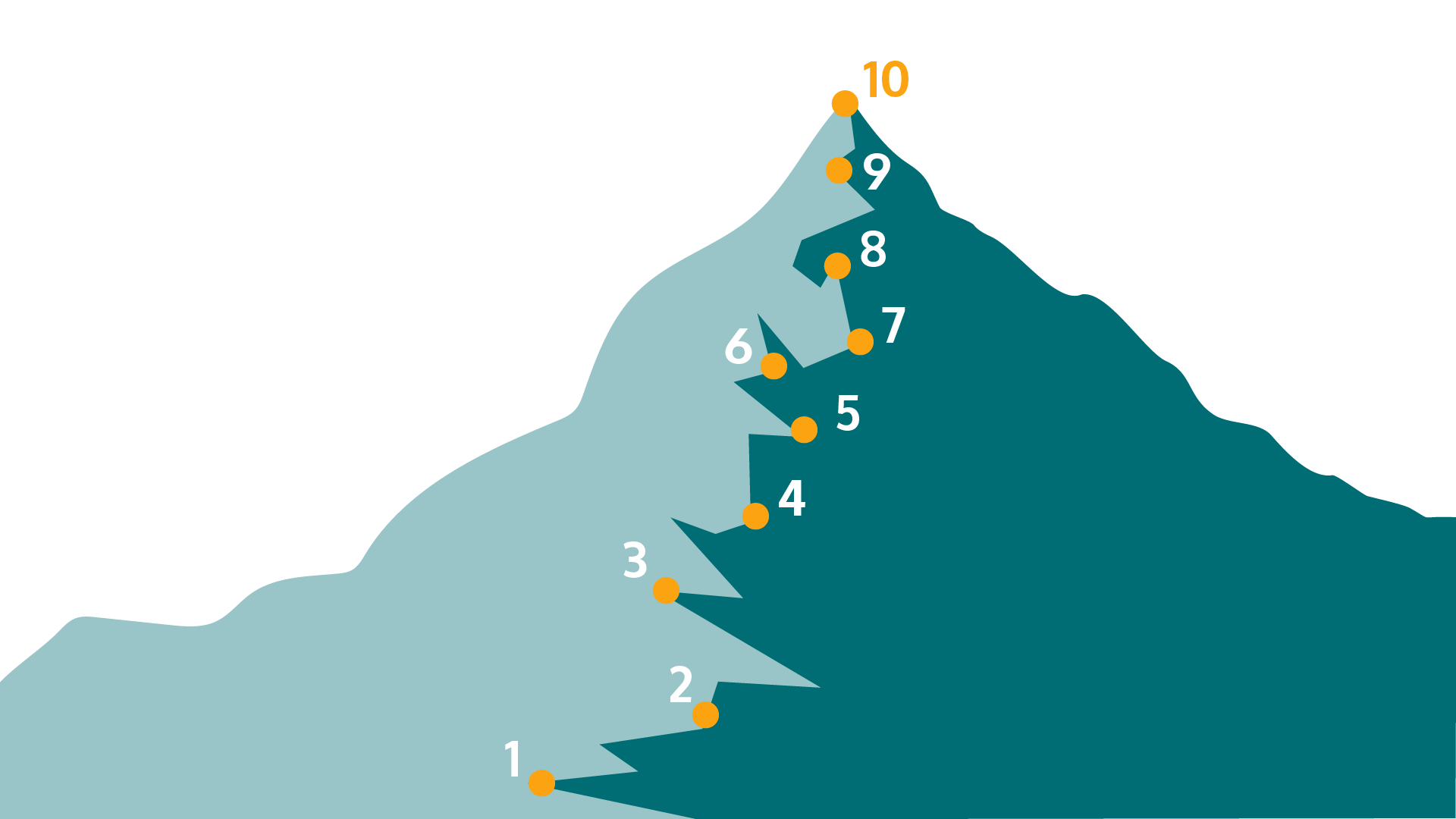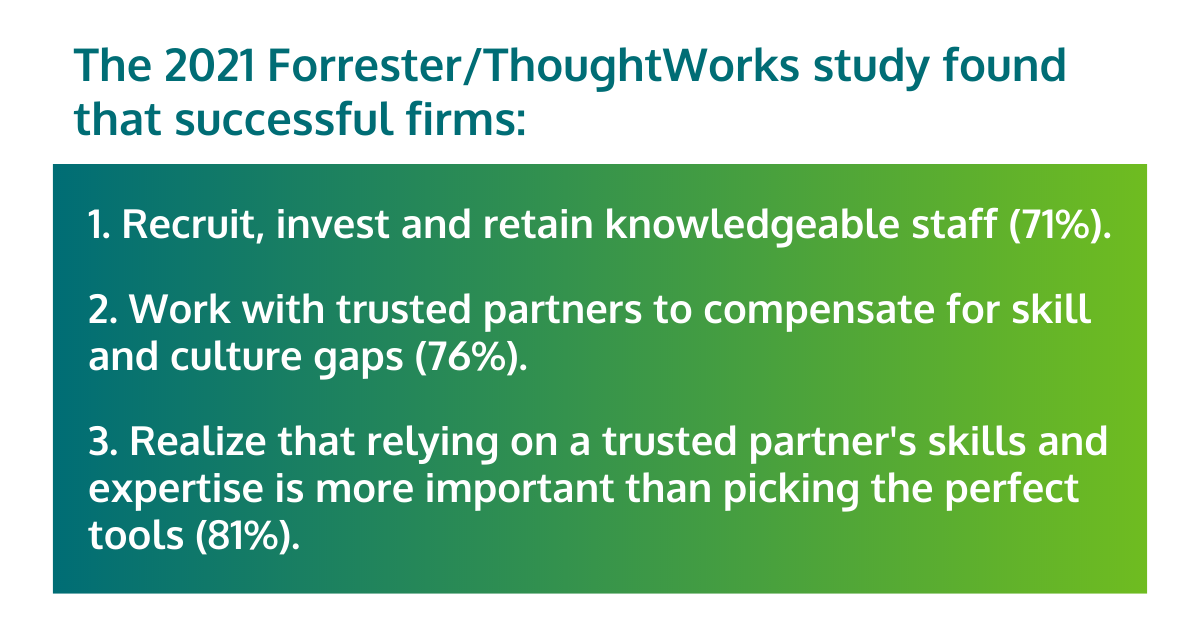Improve your Marketing Ops every week
Subscribe to our blog to get insights sent directly to your inbox.
Confront your process problems head on with a Sherpa by your side.
Explore support options that are tailored to meet you wherever you are on your climb.
Browse our pioneering Agile marketing courses
Learn from the stories of marketers already on the road to process improvement.
Featured Resource

State of Agile Marketing
Learn from 8 years of study on how marketers are increasing their agility.
Download Report
If you've spent any time at all in the corporate world, chances are you've been through something that was labeled a "transformation." Digital, Agile, AI—the initial modifier hardly matters; the approach (and probably the outcomes) is often the same.
The first steps probably include a massive, highly detailed transformation plan, typically documented and delivered in the form of a monster set of slides. While few people will make it all the way through such an avalanche of information, this initial deliverable makes everyone feel good. After all, how could anything so well-documented possibly go awry?
Sadly, the bigger and more complex your plan is, the more likely it is to go off the rails. McKinsey has noted that 70% of all transformation efforts ultimately fail, and I've seen that statistic play out many times.
My teams specialize in Agile transformations, an approach that emphasizes rapid value realization and iterative delivery. However, even when they're ostensibly trying to adopt this kind of mindset and the practices that go along with it, senior executives want to rely on traditional project management.
Here's why Agile transformation and a perfect transformation plan just don't jive.

Similar to digital transformations, Agile transformations won't be accomplished in a single quarter. They require a long-term commitment and deeply-seated change, which means thinking of them as a project is starting you off with the wrong mindset.
A 2021 study by Forrester and ThoughtWorks found that successful digital transformations plan for a 12- to 18-month horizon with regular check-ins along the way. Agile transformations require a similar time commitment, but leaders often want to run a three-month pilot, train a few people as scrum masters and check agility off their list.
As with the digital high performers that Forrester studied, successful Agile transformations should begin to bear fruit within the first six to 12 months. These leading indicators may be as simple as a quicker time to market for marketing campaigns, improved employee engagement or fewer rounds of revision with internal stakeholders. However, the impact might be more business-related and could tie back to marketing qualified leads, conversion rates or marketing-attributed revenue.
Every transformation is different, and there's no way to predict in advance where the improvements will come or exactly when they'll materialize. That means a huge stack of slides with comforting Gantt charts just can't keep up.
Of course, while they're waiting for those initial results to roll in, good Agile transformation partners aren't just sitting around. They're using their experience and expertise to look at results every few weeks (on a sprint-by-sprint basis for those using these common Agile timeboxes). They're listening to the Agile coaches embedded with the teams to get real-time, qualitative insights.
Most importantly of all, they're suggesting iterations. These adjustments can be as simple as changing the structure of workflow visualizations (Kanban boards) or as dramatic as shuffling team compositions. In all cases, however, they're happening early and often.
This is another reason why working with a partner who gives you 300 slides and walks away is a guarantee that you'll join the sad 70% whose Agile transformations have failed. Agile needs constant care and feeding (also known as change management), especially in its first year, and that means picking a transformation partner who can stay on the climb with you.
Before proceeding to learn what Agile transformations need, why don't you take a second to get our Agile Marketing Transformation Checklist?
While they aren't exactly like digital transformations, companies going Agile can use lessons from the digital world to improve their chances of success.

The first of these is just as crucial during Agile transformations. I encourage clients to form a business agility transformation office (BATO) that has the primary responsibility of driving the transformation forward.
Your BATO might be staffed with new talent, or maybe you can up level existing employees. Either way, BATO members will work with an external partner as at least half of their role. If transformation is done "on the side," its chances of success can drop significantly.
Of course, even the best hires have their own gaps in skills and capabilities, which makes choosing the right partner key. When researching partners, ask about these important characteristics.
Agile transformations in software or product development look very different from those in other functions such as marketing or finance. Having a partner with experience outside of tech is vital if that's the area you're looking to transform. Otherwise, you risk getting a copy-paste approach that can make the already challenging path to transformation even more difficult.
Some purely consultative partners will give you a roadmap but leave you to travel solo. A huge, highly detailed plan won't improve the chances of transformation success, but that's what you're likely to get from this type of partner. Look for groups that can consult on the right approach as well as train and coach the teams and leaders throughout its implementation.
Simply putting Agile practices in place should never be the end goal of an Agile transformation; it needs a solid business goal behind it. Make sure your potential partner can measure this impact along with other key success metrics like employee engagement, stakeholder satisfaction and speed to market.
Lastly, don't get too hung up on tools and technology. It's easy to assume that choosing the right tool will set you up for success, but effective transformation partners are far more impactful. If you have to choose between allocating budget to rolling out a new tool or long-term support for your teams and leaders, pick the latter.
When the time comes for you to start your own Agile transformation, consider your plan and your partner carefully. Don't try for a perfect upfront document that won't evolve with your transformation over time. If a prospective partner wants to deliver that kind of plan to you, it's time to look for another one.
Before you move on, don't forget to get our Agile Marketing Transformation Checklist!

Andrea Fryrear is a co-founder of AgileSherpas and oversees training, coaching, and consulting efforts for enterprise Agile marketing transformations.
Subscribe to our blog to get insights sent directly to your inbox.
Subscribe to our blog to get insights sent directly to your inbox.